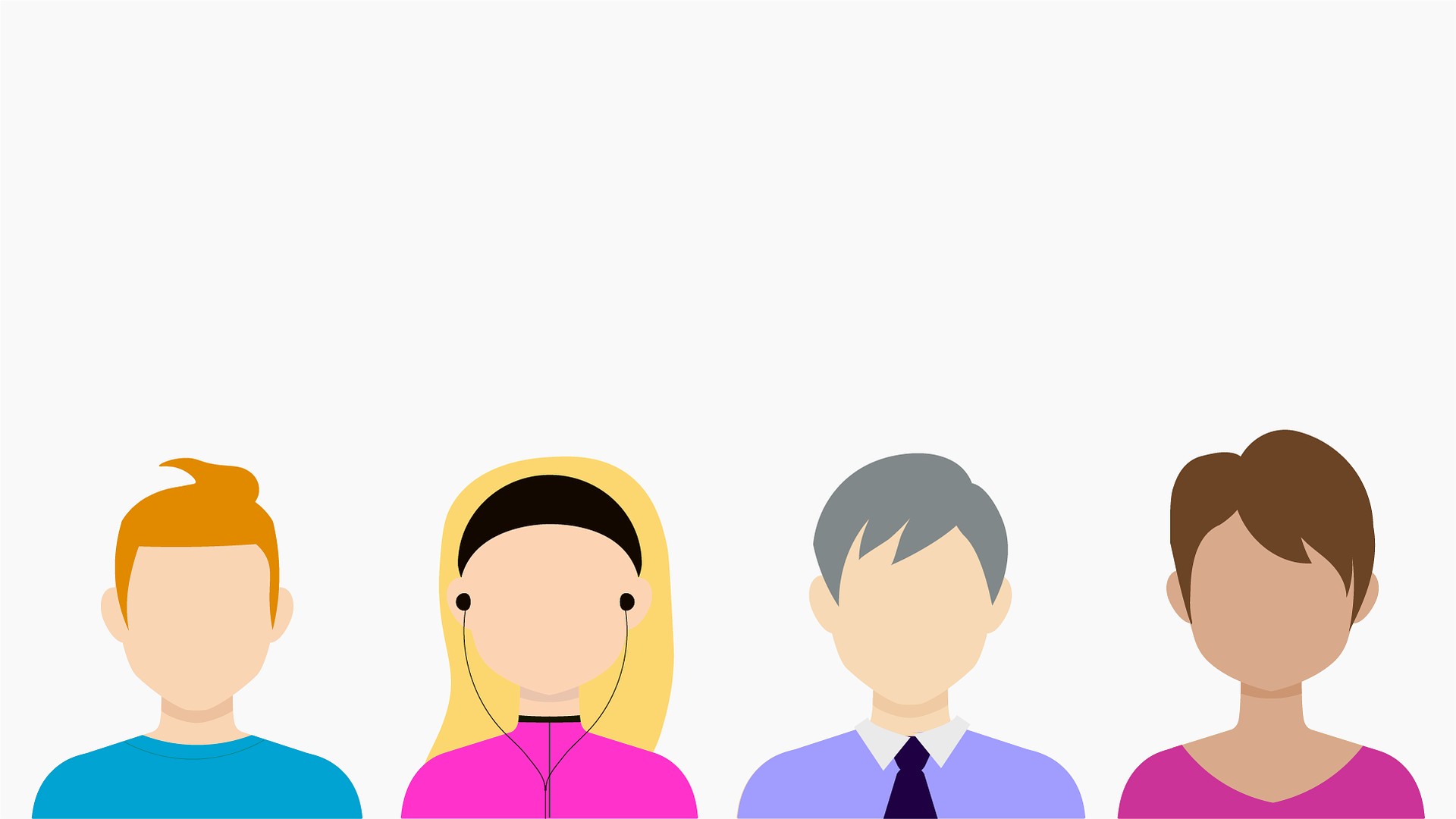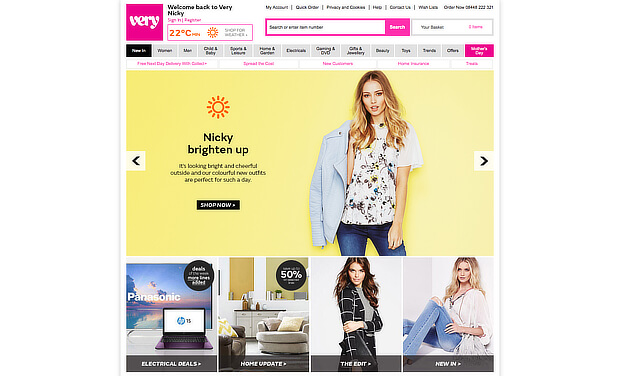Key Aspects of Intelligent Personalization for Any Business
When it comes to implementing personalization, many brands rely on basic personalization principles. It has never been harder to attract consumers’ attention than it is today.
Today’s consumers are fussy and skeptical. It’s a fact.
It’s very hard to evoke any feelings and many brands spend huge amounts of money to get poor results.
I’ve already written that personalization will conquer marketing in 2020 and have given some suggestions on what brands should start paying attention to.
How to Adopt Intelligent Personalization Strategies?
The fact now is that basic personalization fails to engage consumers. Think for a moment — how many times did you buy something, because a brand addressed you by your first name in their e-newsletter?
Chances are pretty low.
Why?
Because calling your name in the e-newsletter is a very basic tactic that every brand has (or should have) implemented already.
This is why addressing the name or sending the birthday-themed newsletter is nothing surprising. To know your personal information is simply not enough in 2020.
That’s why let’s have a look at some intelligent personalization strategies.
Dynamic content
Machine learning has been advancing rapidly and brands should take advantage of it. It’s now much faster and easier to personalize content based on:
-
purchase history
-
preferences (or interests)
-
demographics (age, location, marital status, gender)
-
browsing and buying behavior
-
customer lifecycle
For example, if someone is a frequent purchaser, the best content to insert would be product recommendations based on purchasing history. Maybe, if you’re a fashion brand, you could show what matches well with the previous purchase.
On the other hand, if it’s a hesitant customer, a discount voucher will come in handy. This type of consumer wouldn’t be too enticed to buy based on recommendations. They are exploring and looking for options. Your strategy would be to get them to make that initial purchase.
One of my personal favorite examples of personalization is based on external factors. Imagine if an apparel brand personalizes the content based on the weather conditions in a specific geographic location.
If your consumer comes to your website on a sunny and hot day in their location, you could greet them with clothing options for a hot summer day.
On the other hand, if it’s cold, your homepage could look like this:
Consumers are human beings and they should be affected in a humanly way. Your personalized content is the best way to do so. Personally, if I saw weather-sensitive content, I’d naturally start thinking if I’m ready for such weather conditions.
Offer a seamless experience
There are no more excuses for poor UX/UI experience. That’s why I’m not even going to talk about what a user experience should be. Instead, you should ensure that your personalization enables a seamless experience that’s possible on multiple devices, channels, and platforms.
For instance, where I’m at, it’s really uncommon to purchase online and return unwanted items in a retail store of the same brand. Uncommon is, in fact, a wrong word. It’s not possible at all.
Imagine if I buy on the H&M website, receive my order, and decide that instead of that green shirt, I’d actually prefer the blue one. My tedious experience begins. I need to ship back the order, indicate that I want to change the color of the item, wait for it to be delivered to me again. It’s a lot of wasted time.
Moreover, my purchasing preferences in a store might be different from what I like buying online. On top, I may have viewed the item on the web, but purchased it in-store. It’s a poor personalization technique (which happens very often) to advertise something that was already purchased. It also burns marketing dollars for something that will not bring additional revenue.
There are also lots of wasted opportunities for the brand. H&M, in this case, does not have complete information about what I like purchasing, thus cannot maximize their personalization game to target me even better in their e-newsletters or offers.
So, if you run a physical retail and e-commerce shop, why not start offering digital receipts in your retail store so that the retail store information could be linked up with e-commerce purchasing history through an e-mail address? Just an idea here for starters.
Those brands that offer seamless cross-device (laptop, mobile phone, tablet, etc.) and cross channel (social media, website, Google ads) are already winning the game now. However, the brands that will tap into combining consumer information from digital and physical stores will be the big winners in the future.
Make the use of consumer personas
Rather than simply relying on demographic data (age, location, gender, marital status, etc.), create consumer personas based on shopping habits. Try to predict what content they will engage with.
The problem with demographics qualities is that the data is static and may not influence shopping habits and answer to “why they buy”, “how they buy” or “what they buy”.
Consumer personas are, on the other hand, very powerful insights. We can no longer frame shoppers based on age or gender because today consumers are much more than that.
I wrote earlier about the consumer (user) personas and how to leverage them to drive more traffic to your website.
Behavioral factors these personas could be built on include:
-
customer journey stage (frequent buyer, first-time buyer, etc.)
-
customer lifetime value (one-off buyer, loyalty member, etc.)
-
frequency of purchase (seasonal buyer, impulsive buyer, etc.)
-
marketing engagement (engages on social media, uses newsletter as inspiration to purchase, etc.)
-
price sensitivity (price-sensitive, impulsive, etc.)
Look for ways “how to personalize it”, instead of “what to personalize”
Image by Mohamed Hassan from Pixabay
The next tactic is linked to the consumer personas mentioned above. Instead of concentrating on what you should personalize, better look at how to personalize it.
Netflix is the best example here.
Did you know that your Netflix browsing page is totally different from your friend’s or husband’s? The reason is — Netflix takes personalization to the next level. Literally.
The artworks used for the same shows or movies differ based on your watching preference. For example, if you love watching comedy and your friend loves romance, you two will be seeing different artwork for the same show.
This is because Netflix wants to entice you to watch the show. They know that your friend is more likely to watch it if there is a romantic couple on the artwork, while you’d prefer something that screams comedy.
This is true for all types of businesses, though.
If you’re a food blogger — you’d use different artwork to entice a gourmet foodie to visit your site, compared to someone who loves street food.
Your product is there. That’s why rather than questioning what to personalize, you should look into different ways of making it happen.
Show personalized gratitude
Using personalization shouldn’t be only about bringing consumers to your store, or making sure they buy something. You should also personalize how you thank them for buying from you. Too bad, this is often forgotten, but, in my opinion, it is imperative in building customer loyalty and better relations.
I love getting personalized thank you notes for my e-commerce purchases. Especially, if the name is hand-written — this proves that a merchant made an effort to connect with me.
Look at Starbucks, for example. The baristas make sure to write your name on each cup (even when there are no people and they don’t need to shout your name across the coffee shop). It’s a simple tactic to make you feel special and connect better with you.
It recently happened to me in a local juice bar. I ordered at the counter and the cashier asked for my name. I told her my name. She even started spelling it out, expecting her to write it somewhere. No. All she needed was to say “Thank you for your purchase, Edgaras” upon handing the receipt to me. I was very nicely surprised and impressed.
I realize that personalized thank you notes or writing the name, in many cases, aren’t feasible. But you should still find ways to show gratitude to your customers.
What about inserting a relevant testing sample of your other products? I love Kiehl’s because the staff always make sure to offer some small samples of other products that would work the magic for my skin.
If you are a bakery, why not adding a small bag of cookies as a gift to your customer? This may become an additional item they will buy next time visiting your shop.
You can use your consumer data and adapt the gifts to different buyer personas. This will surely wow them, make them feel special, and will put a smile on their faces.
Takeaway
Basic personalization tactics, such as greeting by the first name, are no longer enough to engage with the customer. Therefore, intelligent personalization is the best way to attract your customers, predict and shape their behavior, and foster loyalty. It’s possible for all brands.
By following the ideas shared here and tapping into the customer data that is available for you, you’ll be able to bring your personalization to the next level. Remember, your efforts should be invisible and bring convenience to your consumers.
With all this in mind, you’ll soon notice the improvements in your customer experiences and growth in revenue.
Other popular posts:
Why You Shouldn’t Fall For “Follow-Unfollow” Instagram Sham
The Top Marketing Trends You Need to Adopt in 2022
Personalization Will Continue Conquering Marketing In 2022
Never miss a post
Subscribe to Substack to get the latest posts delivered to your inbox!










